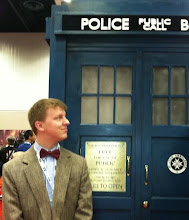The first Shrek film took a familiar format and put a lot of new elements into it. It was very self-aware and was able to have fun with it. Shrek and his sidekick, Donkey, do save the princess and defeat the villain but the motivations behind it is to initially be left alone in a swamp. There are plenty of fart and burp jokes in addition to jokes clearly only meant for adults. This really sets the staple of pop culture references, which has begun to plague most of the Dreamworks films. These sorts of jokes are usually to accommodate adults while they are trapped in the theatre. The kids aren’t really supposed to know that Princess Fiona is doing a move like Neo in The Matrix.

While being meta and sarcastic, Shrek also ended up being sweet as well. It had good messages about accepting people for who they are and definitions of beauty. It was making a lot of references to other films, but it still made a few of its own original moments. Most kids growing up with these films can give you the onion dialog verbatim.
Then sadly something was lost from the following films. It was like the filmmakers didn’t have anything else to say about fairy tales. Shrek 2 did what every sequel does which is to make everything bigger. There are more characters some were welcome (Puss in Boots) and some are forgotten (Prince Charming). However the movie didn’t really move forward, but instead went back. Once again there are the same themes of inner beauty and acceptance. There were still some fun aspects to this movie, but at the end of the movie our heroes are in the same place as the ending of the last film.
Shrek the Third moved the series forward but in the process infuriated or at the very least disappointed its fans. The entire movie felt uneven, but the worst offense was that it made Shrek an unlikable character. The King dies and Shrek is asked to take over the responsibilities. They show a montage of the jobs and sure Shrek bumbles at them, but they still seem easy. Shrek is lazy so he decides to go find Arthur and tries to manipulate him into taking the throne. He also finds out Fiona is pregnant and he’s upset about that as well. Shrek has always been a bit of an anti-hero, but it’s like the first two movies never happened.

Shrek Forever After is more of a grounding of the series. It’s very low on pop culture references and returns to more of the pacing of the first one. It moved forward the character of Shrek but used it in the veil of an alternate reality where the motivation is to return things back to normal. The entire plot is extremely reminiscent of It’s a Wonderful Life except with an added antagonist.
Financially, the series was a huge success. The first three films are in the Top 50 domestic box office of all time with the second one positioned in the 5th spot. There are millions of toys and even its own Christmas special to air every year. There is no other animated film franchise with this kind of power aside from Toy Story. The major difference is that the Toy Story series (and all of Pixar) has had a stronger level of quality. It’s sad that the final chapter of Shrek couldn’t have returned to its initial level of creativity. It didn’t really seem to have the feel of a true final chapter. Perhaps that means we’ll see another Shrek film down the line in ten years to introduce the characters to a new set of kids. I would be hesitant, but it could have potential if it stuck to what made the original great and focused on being new and innovative, not just rehashes.
http://www.thefilmyap.com/2010/05/18/all-about-shrek/


No comments:
Post a Comment